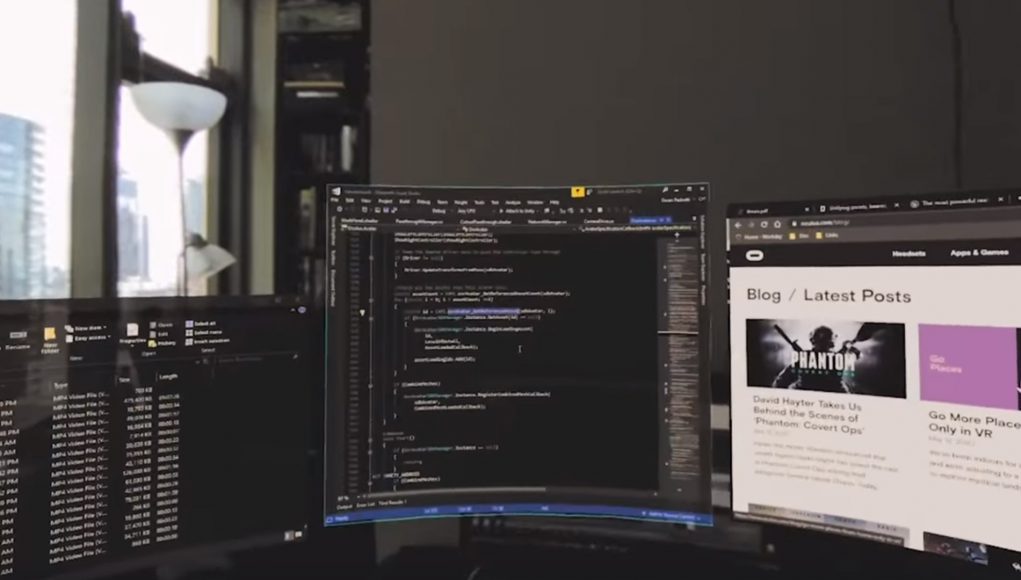In light of the global pandemic, Facebook announced last week it was making way for more productivity and collaboration apps on the Oculus Store to help bridge businesses together in a time of social distancing. Now, Facebook has shown off a concept interface that gives us a peek into what the company calls “the future of augmented workspace.”
Andrew ‘Boz’ Bosworth, Facebook’s VP of AR/VR, showed off the concept yesterday which he says uses a prototype VR headset. In the short clip seen below, we see a person using the headset’s optical hand tracking to manipulate and place multiple virtual monitors—a feature basically available on Oculus Quest today—and use a physical keyboard, all of which is set to the backdrop of a photogrammetry scene.
The concept, Bosworth says, is building on the passthrough function on Quest, which lets you keep an eye on your physical surroundings when you first set up the headset’s Guardian safety system, and use passthrough’s monochrome view of the world in place of a virtual Home.
As we think through supercharging remote work and productivity, we've been working on mixed reality concepts that builds on existing technologies like Passthrough to allow people to switch between real and virtual worlds pic.twitter.com/cJCEXDxC7b
— Boz (@boztank) May 21, 2020
At its core, Facebook says the future of immersive headsets as a productivity device will need to offer “a flexible and infinite workspace” which will let people create a working environment from anywhere in the world. It would, according to Facebook’s AR/VR team, need to allow users to switch between real and virtual worlds at any time, just like we see in the video.
As far as consumers are concerned, no such headset exists today in terms of display pixel density to replace a monitor and ability to seamlessly handle both augmented reality tasks such as looking at your physical hands and keyboard, and virtual reality tasks, like replacing your entire background with an ideal, distraction-free setting. You’d be mistaken in believing its far off though.
Companies like the Finnish headset manufacturer Varjo have been pushing in that direction in the enterprise space for years now; the company already offers its $10,000 XR-1 Developer Edition headset which achieves a high pixel density nearly capable of replacing a standard monitor by way of blending a central 1,920 x 1,080 micro-OLED ‘focus display’ (60 PPD) with a larger ‘context’ display at 1,440 x 1,600, which has a lower PPD but provides the headset with an 87-degree field of view. It also does mixed reality.
Of course, it doesn’t just come down to pixel density, better passthrough, and great hand tracking. Keeping users working in a headset requires not only advances in ergonomics, but also advances in the headset’s ability to allow dynamic depth of field for long-term visual comfort, something Facebook is working on in their varifocal Half Dome prototype.
And although Bosworth’s video is only a small slice of Facebook’s vision of the future of work, the company also says that such a system would undoubtedly benefit from “seamless desktop integration and networked social features,” so you could work in a virtual office with easy access to colleagues from the comfort of your own wherever.
There will no doubt come a day when such an AR/VR work device provides so many material benefits over a single-screen laptop that you may only need a headset and physical keyboard to get everything done (and faster). But even then, a physical keyboard may be an anachronism in a world where the 2D Web bends to the will of the overwhelming numbers of AR/VR users, and the future of work inevitably shifts to take the fullest advantage of these new three-dimensional paradigms.







